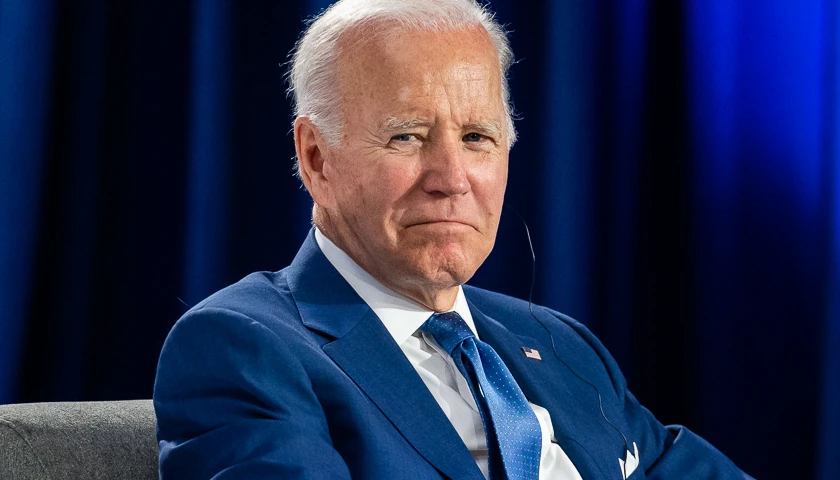by David Blackmon
In a recent interview, World Energy Council Secretary General Angela Wilkinson told me that one of the main impediments to the energy transition today is a lack of what she calls “systems thinking.”
“Energy transitions are a change in the organization of society,” she pointed out. “They’re not a simple case of swapping out one technology for another and everything else stays the same. Yet, we have this very simplistic narrative that we can take the oil system, we can put renewables in, it’s going to happen immediately, and nothing else will change. It’s like saying we’re going to take your thighbone out, but we’d like you to run a marathon.”
 But that simplistic narrative is essentially what President Joe Biden and congressional Democrats used to sell the public and reluctant Democrat senators — like Sen. Joe Manchin of West Virginia — on the glories of the Orwellian-named Inflation Reduction Act (IRA) during the course of 2021 and the first 8 months of 2022.
But that simplistic narrative is essentially what President Joe Biden and congressional Democrats used to sell the public and reluctant Democrat senators — like Sen. Joe Manchin of West Virginia — on the glories of the Orwellian-named Inflation Reduction Act (IRA) during the course of 2021 and the first 8 months of 2022.
Given that Friday marked the 2-year anniversary of the day Manchin surrendered his political future by serving as the deciding vote in the passage of that landmark bill, now is a good time to take a look at where it has brought the country since Aug. 16, 2022.
The first thing to understand about the IRA is that the Democrats who enacted it along strict party-line votes see it as merely a down payment for their ultimate Green New Deal-based goals for transforming the entire U.S. economy. It is not just me saying this, it is Democrat officeholders like Treasury Secretary Janet Yellen, who recently told an interviewer that the global energy transition to a net-zero goal would require $3 trillion in new capital spending every year through 2050.
That is a conservative estimate, by the way. McKinsey & Co. released an estimate two years ago of $275 trillion from 2021 to 2050 to meet that goal. That estimate came before we began to learn about the energy demands for data centers and AI technology, and before we experienced all the Biden-Harris inflation. By now, the number would no doubt come to $300 trillion or more, a cost so high and economically ruinous that the human mind simply cannot truly conceive of it.
The advertised $369 billion in green energy tax breaks and direct subsidies contained in the IRA seems paltry by comparison. Goldman Sachs estimated last year that the true cost over time will be more in the range of $1.2 trillion, but that is still just a drop in the bucket.
Obviously, future presidents and congresses would need to enact many more IRA-type debt-funded spending sprees to really have any hope of getting to the flowery utopia envisioned by the Green New Deal and its sponsors.
So, two years down the road, what has this down payment really accomplished? Not a lot, really, in terms of transforming the energy system. The U.S. has seen a marginal rise in the percentage of power generation provided by wind and solar. This is especially true in solar, where installed capacity rose by over 10 percent in 2023, and has continued a rapid rise in 2024. The growth has been especially rapid in Texas, which has quickly become the national leader in solar capacity after having focused on growth of wind power over the prior 20 years.
The flow of IRA subsidies and tax breaks has also had the inevitable effect of encouraging the starting-up of businesses that are not based on sound business models. This is especially manifesting itself in the electric vehicles sector, where almost every pure-play EV maker in the country not named Tesla is either in bankruptcy or teetering on the brink. Legacy automakers like Ford, GM, and Stellantis, who were so eager to go in whole hog on the Biden-Harris agenda, have spent much of the past year scaling down and canceling EV investments as the consumer market has flopped.
The vaunted Biden-Harris offshore wind adventure is also shaping up to become a boondoggle, as companies like Orsted, BP, Equinor and others have cancelled project after project and suffered big financial hits related to high inflation, rising interest rates, and mucked-up supply chains. The recent collapsed wind blade fiasco at Vineyard Wind, the only offshore project to come on-line to date, which littered the beaches of Nantucket Island with dangerous fiberglass insulation, now threatens to force a reconsideration of the entire sector in the United States.
Finally, the other aspect of the deal Manchin made with Senate Majority Leader Chuck Schumer and then-House Speaker Nancy Pelosi in exchange for his decisive IRA vote — legislation to streamline permitting processes related to energy projects — has also been a flop. Manchin’s initial bill failed in late 2022, and the bipartisan bill he is now pursuing seems to have similarly dim prospects of ultimate passage.
As we observe the IRA’s two-year anniversary, it is fair to say the disjointed collection of green subsidies and tax incentives have created exactly the negative impacts its critics warned would be the result when Biden signed it into law.
It has all been quite a disaster so far, and whomever assumes the presidency in 2025 should make a reconsideration of the entire approach his or her top energy priority. Perhaps even engage Angela Wilkinson to help lead the effort.
– – –
David Blackmon is a reporter at Daily Caller News Foundation.





